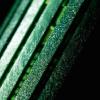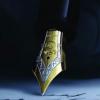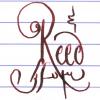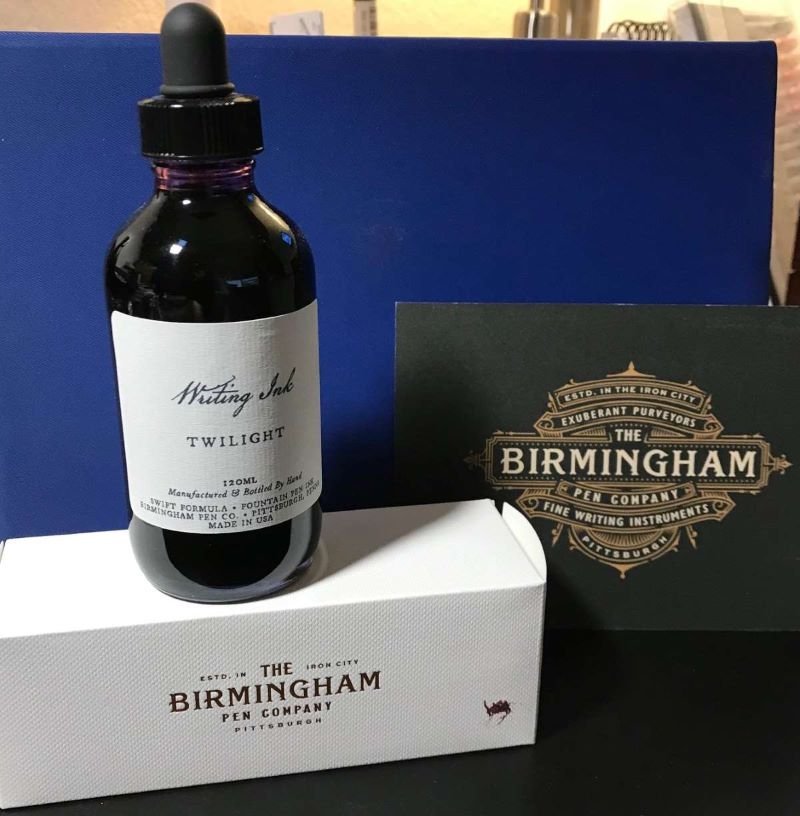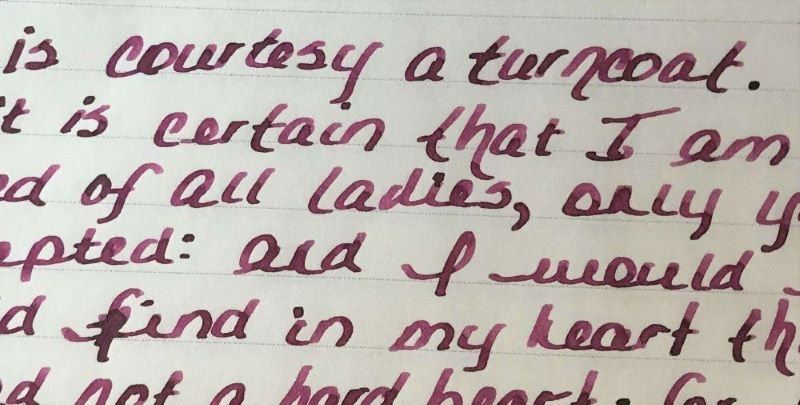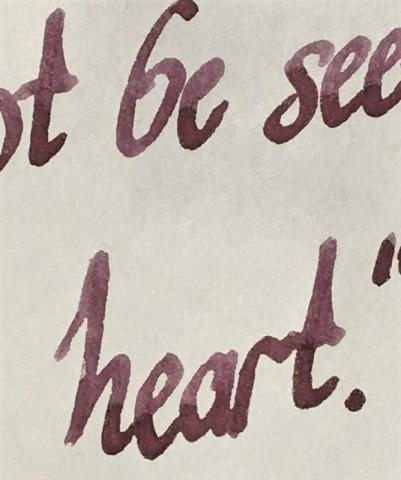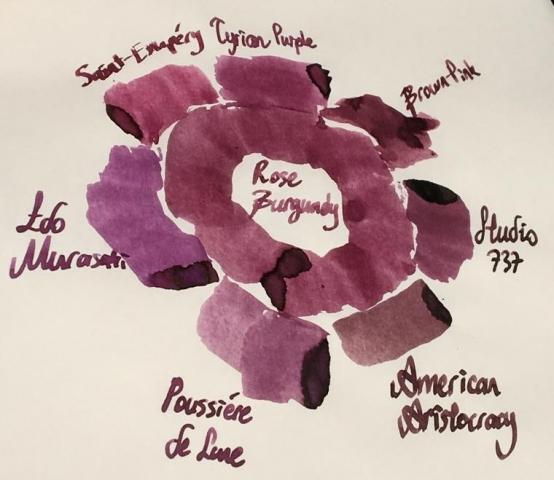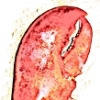Search the Community
Showing results for tags 'purple'.
-
TAG Kyoto - kyo-no-oto - sakuranezumi TAG is a stationary shop in Kyoto (Japan) that produces some interesting soft watercolour-style inks. With the kyo-no-oto series they produce a line of inks that replicates traditional Japanese dye colours. According to available only info, the manufact...
- 20 replies
-
- tag kyoto
- kyo-no-oto
-
(and 3 more)
Tagged with:
-
Thank you to everyone who was so warm and welcoming on my first review a few months ago! Finally returning with another review Tender purple: we know her, we love her. Reminds me sometimes of the pansies that would spring up in my backyard growing up. transcription:...
-
When I tried Diamine Eclipse the first time, I just loved the color. It was such a unique blackish purple. And it seemed to work pretty well in my pens. So I started using it in one of my daily carries. Well, I've been using it for about six months now, and, while it certainly isn't the type of...
- 39 replies
-
- diamine
- diamine eclipse
-
(and 1 more)
Tagged with:
-
Teranishi Guitar – Innocent Mauve Teranishi Chemical Industries was founded during the Taisho period in 1918, and got quite some fame as one of the earlier ink producers in Japan. The Taisho period is often remembered as a romantic era. For their 105th anniversary, the company introduced...
- 10 replies
-
- teranishi
- teranishi guitar
-
(and 3 more)
Tagged with:
-
Manufacturer: Parker Series, colour: Quink Purple Pen: Waterman Hemisphere „F” Paper: Image Volume (gramatura 80 g / m2) Specifications: Flow rate: very good Lubrication: good Bleed through: noticeable Shading: noticeable Feathering: unnoticeable Saturation: good A drop of ink smeared with a n...
-
Jacques Herbin – Violet boréal La Société Herbin, Maître Cirier à Paris, was established in 1670. This makes J. Herbin probably the oldest name among European ink makers. Today, Herbin produces a range of beautiful fountain pen and calligraphy inks, writing instruments, gift sets and acc...
- 23 replies
-
- jacques herbin
- violet boréal
-
(and 2 more)
Tagged with:
-

Best Yellow- And Green-Sheening Purple Inks (Vs. Diamine Winter Miracle)?
Wistful-Ink posted a topic in Inky Thoughts
Winter Miracle was by far the standout for me from the Diamine Inkvent calendar, and now that they're going to be available in 50 mL bottles, I'm sorely tempted to buy a bottle. But I don't have many large ink bottles, and before I commit, I'd like to see if there are similar inks that are worth try... -
I’ve just read a note from my wife, written using Diamine Monboddo’s Hat. It looked black to me, so we had a discussion and she is still only using Monboddo to ink that pen. Further investigation showed this: (The contrast has been heavily reduced to show the effect on-camera, but the o...
-
Diamine Purple Dream (150th Anniversary II) The ink maker from Liverpool is one of the staple brands in ink-land. They consistently produce solid inks for a very reasonable price. In 2017, Diamine released their second ink series to commemorate their 150th Anniversary. I obtained my set...
- 7 replies
-
- diamine
- purple dream
-
(and 2 more)
Tagged with:
-
Hello FPNers - I’m searching for a burgundy ink that tends more toward purple than red. Purgundy? Burple? I like wet inks that are highly saturated, rather than milky or murky in appearance. Shading is nice, but not required. Thanks! GNL
- 18 replies
-
This is a muted , bullet proof purple in the Polar series. Polar series consists of five inks. Black, Brown, Green, Blue and Purple. Comparison: Polar inks were developed for cold regions. In their original iteration they didn’t freeze, but had flow issues, I be...
- 13 replies
-
Hello Inky Friends! It has been quite awhile since I shared my comparisons of pink and purple inks here: https://www.fountainpennetwork.com/forum/topic/274481-pink-purple-ink-comparisons/ I have updated the list with a few new inks (mostly samples, but a few are bottles as well.) Again I wil...
-
Hydrangea (Birmingham) vs Himeajisai “Hydrangea” (Kobe #57) FP inks The Birmingham version goes on a greyish blue but dries to a violet-periwinkle. Both very pretty.
- 20 replies
-
- birmingham
- kobe
-
(and 1 more)
Tagged with:
-
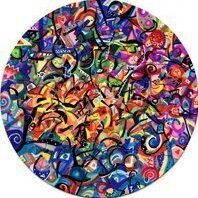
Comparison of Pearlescent Violet-Copper (De Atramentis) & Hayabusa Glistening (Colorverse)
Audrey T posted a topic in Ink Comparisons
- 6 replies
-
- de atramentis
- colorverse
-
(and 1 more)
Tagged with:
-
Ink Review: Birmingham Pen Company Twilight Background: Birmingham Pen Company (BPC) started as the brainchild of two brothers – Nick and Josh. Initially, Nick and Josh worked with third party ink producers in England and Germany to produce their inks. BPC st...
- 24 replies
-
- birmingham pen company
- twilight
- (and 6 more)
-
SAILOR MANYO NEKOYANAGI Sailor created another line of inks, the Manyo line. The inspiration for this line of inks are flowers found in the Manyoshu, an ancient collection of Japanese poems. The inks are presented in lovely square glass bottles and contain 50ml of inks. While...
-
Recently, I acquired several samples of Taccia Ink. Taccia Ink is newly developed in California, but made in Japan by experienced ink makers. There are 13 colors that are vibrant and pleasurable. The inspiration for the colors comes from the "Japanese way of seeing colors in a pure, honest and in...
-
I like old ink (and pens) This is not a secret Why? Because when vintage ink was made, it had to WORK. Period. It wasn't boutique or eccentric. Fountain pens were PENS, not bling (ok, some were bling, but they still had to function as pens, without fail!)So badly behaving ink was an impediment to w...
-
Ink Review : Diamine Händel (Music Collection) Pen: Lamy Safari, M-nib Paper: Rhodia N°16 notepad 80 gsm Review London, summer of 1727. “I have been commissioned to write an anthem for the coronation ceremony of my benefactor Prince George – but what to use as a theme? Now, while attendi...
-
Very nice ink, that has been reviewed before. Colorful, yet subdued enough to be used at work. I made a mistake in not having enough ink in it to start the review, so the review is a bit two colored. The first part, seems a bit dryish, when the ink was nearly over. When I filled it, it was very we...
-
Here's another amberleadavis special. http://extras.ourpatioparty.com/files/7715/9033/4330/African_Violet_001-640p.jpg Forgot to indicate this is Rhodia Dot paper... Chroma seems like a single dye component.... http://extras.ourpatioparty.com/files/5915/9033/4331/African_Violet_Chroma_0...
-
Hello dear FPNers, We have a common enemy. An enemy who is obsessive to take out what we have in our bank accounts or even what we got in our purses. A decisive, a talented, a perfectionist, a world wide known enemy who keeps releasing some magnificent items which we really don't need to but h...
- 16 replies
-
- montblanc
- montblanc rose burgundy
- (and 8 more)
-
I like writing in purple and wanted to expand my current ink collection (I have J. Herbin Poussiere de Lune and Nemosine Alpha Centauri), so I recently bought some samples to try. I thought I'd share the quick writing I did to compare the colors. I used 3 pens, dipped the nibs in the ink, then rinse...
-
Ink Review: Nagasawa Kobe #18 Sannomiya Pansy Overall Impressions: The color does make me think of the dark purple in a pansy. It has very nice shading. Shading: Yes, from medium purple to very dark purple. Very dramatic looking with a big nib. Sheen: There was little bit with a wet nib, on the out...
-
Ink: Rohrer & Klingner Cassia Overall Impressions: A vibrant purple. I like the way it shades. The ink seems well-behaved; it doesn't take overly long to dry, and it flowed well in the pens I tried it in. Seems like a great everyday purple with some flair. Shading: Yes, with bigger nibs on most p...





